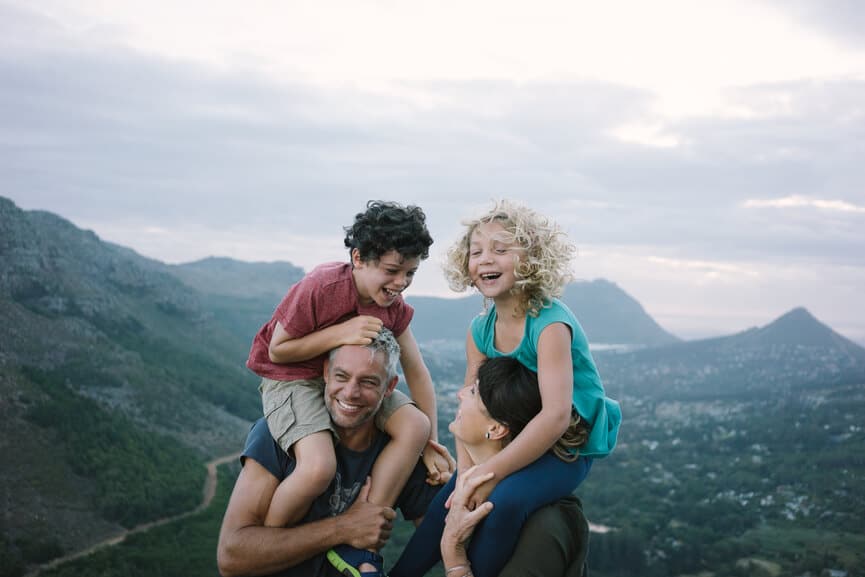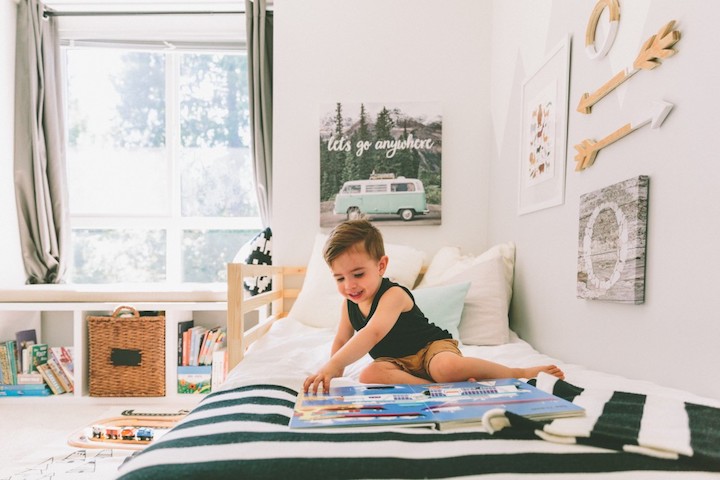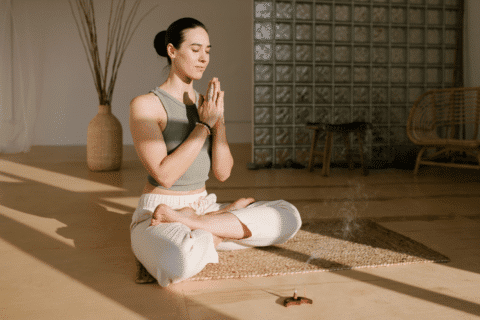How to take your family camping
Tips for first-timers that ensure everyone’s a happy, healthy and safe camper.

Even in normal times, camping, hiking and generally enjoying the great outdoors is one of the best things you can do with your family. But during the coronavirus pandemic, when so many leisure options are off the table, camping has become even more inviting. It’s a way to bond, to build new memories, and to show your children a world beyond their screens and routines. Being in nature is (usually) fun, and fun has been hard to find in 2020.
Also, after all this time cooped up with your family, don’t you want a little space? As it turns out, taking a camping trip can be a great way to be together as a family — while still letting everyone do their own thing. Maybe you all go for a walk in the morning, then the kids go and climb trees after lunch while the parents fish, stroll or just do nothing.
This fall, there will be many families going hiking or camping for the first time. If that includes you, take a look at our family camping tips below, including what to buy, where to go and what to ignore.
In this article:
Where should you go?
As with hotels, there are many different kinds of campgrounds, ranging from the luxurious — resort-like places with swimming pools, beaches, restaurants and such — to rustic spots that offer little more than a beautiful place to pitch a tent. There are private campgrounds all over the country, as well as options within many state and national parks.
Having decided what part of the country you plan to visit, consider what you want from your experience and who’s coming. If your older child is being dragged along under duress while their younger sibling can’t wait to go bird-watching, you might want to pick a place with some structured activities for the former and plenty of trees for the latter. If you want peace and seclusion, you might skip the most well-known national parks and look at campgrounds run by the US Army Corps of Engineers, which are generally less busy (and often located by lakes). Be honest with yourself about how much you want to rough it. If nice bathrooms are important to you, choose a campground that has them.
Wherever you hope to stay, it’s best to make a reservation. (You’re not the only person to have suddenly developed an interest in seeing Yellowstone this year.) And check on campground policies. For example, if you’re going to bring the family dog, make sure that’s allowed.
When you get there, try to pitch your tent in shade — a hot tent is no fun in the daytime — and on high ground: If you’re camped at the bottom of a hill and it rains, your tent may come to seem more like a wading pool.
What should you bring?
A tent
Depending on where you camp, you might be able to rent a tent instead of buying one. In either case, these are the things to consider when choosing your new home-away-from-home.
Size: Your tent should be big enough for all the people who will be sleeping in it, plus the bags you’ll want to keep inside. Beyond that, there should be space for people to climb over each other (midnight bathroom runs; early risers) without causing too much grumbling. Also, remember that nothing and no one should touch the sides of the tent: there’s a chance the tent will leak if you do. If in doubt, go bigger, not smaller.
Weight: If you’re planning to camp in a different patch of wilderness each night, you’ll want your tent to be as light as possible (because you’ll be carrying it). This will increase the cost. But if you’re driving to a campground with your kids, then weight is not a factor — just throw the tent in the trunk and don’t think about it.
Design and features: Tents are a bit like coats: Know what weather you’ll be using it in and buy accordingly. If you’re road tripping in the fall, then a two-season tent should be adequate. If you’re hiking the Canadian Rockies this December, you’ll want a four-season tent. Get one with vents that will allow air flow on hot days, and flaps that can be fully rolled up so you can enjoy the outdoors from inside your tent when the kids need a nap.
Look for a tent with inside pockets (because things get mislaid when the floor is covered with people) and ceiling loops which make it easy to hang lights.
Finally, get something that is easy to put together (color-coded poles are worth seeking out). Your family will be impressed if you can build a fire from scratch, but no one appreciates it when you assemble a tricky tent. Make it easy on yourself.
Try before you buy: The easiest way to make sure you’re buying the tent you want is to go and try it out. If you have a nearby camping store, see some tents firsthand and make sure it can be assembled by someone who isn’t an engineer. If your only option is to buy online, read the reviews: Tent reviews tend to be less polemical than assessments of books or music, so this is one part of online life where the comments are pretty useful
A tarp
You’ll need some ground cover under your tent: It helps prevent moisture from seeping into it from below, and protects the exterior base of the tent from rough ground, tree roots, rocks and other things that can wear it out. Make sure the tarp doesn’t extend beyond the edge of your tent, otherwise moisture that runs down the outside of the tent might pool there. You can buy a specially designed “footprint” for some tents — basically a tarp that’s the exact size you need — but if you know how to fold a sheet, you can fold a standard tarp into the dimensions you need.
Something to sleep on (and in)
You and your family will be most comfortable if there’s something between you and the bottom of your tent. This could be an air mattress if you have some at home, or you could buy or rent sleeping mats made for camping. Some inflate, and all protect you from the overnight chill of the ground. To stay warm, you might get away with sheets and blankets from home if you’re camping in mild weather; otherwise you’ll want a sleeping bag. As with tent selection, choose your sleeping bags based on the temperatures you’re likely to encounter.
Also bring…
- Trash bags
- Something to read (you are on vacation)
- Flashlights (several) and batteries
- Bug spray
- Snacks
- Extra shoes (in case one pair gets wet) and plenty of warm socks
- A portable clothesline (for the wet shoes, towels and everything else)
- Cooking utensils, plates, cutlery and whatever else you’ll need to make dinner under the stars — anything from “just two sticks to rub together” to a camp stove, depending on how you approach things
- A cooler
What if things sell out?
If you tried to buy a bicycle or an inflatable pool over the summer, you’ll have noticed that things are selling out in new ways thanks to the coronavirus. If you encounter this problem while shopping for your camping trip, try to think creatively. If your local store is out of tents and you can’t find one you like online, see if you can rent one at the campground you’ve booked.
If you’re having trouble finding other items, remember that some outdoor camping gear is just a repackaged version of something you might find in a regular store. Need extra hanging loops for the inside of your tent? Well, that’s just a strap; they have them at your local hardware store. Has your camping shop sold out of tarps to go under your tent? It’s a big piece of rugged waterproof material; once again, the hardware store can help. Is there a shortage of hiking socks? Tell your kids to wear two pairs of normal ones. Part of an outdoor family camping trip is about adapting to the conditions. You can start that process before you head out the front door by packing the proper camping gear.
What about the essentials?
When you plan a camping trip, so much thought goes into logistics like the tent that it’s easy to forget you’ll also have to deal with familiar activities that will be rendered unfamiliar by being outdoors. Such as…
Food
If you’re staying at a campsite, check what the food options are — prepared food? a well-stocked nearby store? — then shop accordingly before you hit the road. One of the great joys of camping is cooking under the stars, so make sure you have everything you need, from fuel to ingredients. Take the time to think through everything you’ll need, from some kind of firestarter to cooking utensils to appropriate plates and cups. Also find out what the cooking rules are where you’re staying.
Make your outdoor cooking set-up easy for your kids to use — it’s a big part of the fun. If your children are older, perhaps they can grill meat. If they’re younger, they can certainly toast some marshmallows, as long as you’ve brought extra-long skewers.
Be sure to bring plenty of food that does not require cooking — granola bars, raw veggie sticks, peanut butter and bread, plenty of fruit. Your family will be active, which means they’ll be hungrier than usual, and no one wants their six-year-old to go from hungry to hangry in the middle of the woods. Also remember that food that can be eaten from the packet will be needed if cooking under the stars turns into not cooking under the rain.
Bathroom
Even a very basic campground is likely to have a bathroom, but don’t assume it will be well-appointed. Bring plenty of toilet paper, hand wipes, sanitizer and hand soap. A pair of cheap flip flops for each family member means no one has to think about how clean the showers are.
Boo-boos
Your kids will be running around outdoors — stuff happens. If someone breaks a leg, then have a professional deal with it. (Make sure you know where the nearest hospital is, just in case.) But you should be prepared to deal with basic bumps, scrapes and bites. Bring a standard first-aid kit, plus antiseptic gel, sunburn lotion, hydrocortisone cream for bites, antihistamines for allergies or stings (the appropriate strength for your kids’ ages) and bandages
What advice can you ignore?
Do a trial run
There are people who will tell you to first try camping in your backyard with your children to see how they react to it. This makes about as much sense as telling your child the entire plot of the movie you’re taking them to see. When you go camping the idea is to have an experience that’s different to what you have at home; to experience surprises. Don’t rob yourselves of that opportunity. If your kids turn out not to love camping, let them find that out while doing it for real.
That said: if you haven’t put up a tent before or the one you bought is an unfamiliar design, it is worth putting it together once before you go. If you arrive at your campsite in the dark after a long drive, that’s not the best time to decipher new instructions or to realize that you’re missing a pole.
Bring familiar entertainment options
You may be advised to bring lots of home comforts for your children when you go camping so they don’t get bored. Don’t. The point of camping is not to create a couch-free version of your living room — it’s to do something different and to engage with nature. Try to leave space for your children to entertain themselves in a new environment without all their familiar tools, particularly those that require electricity or batteries. Depending on your kids’ ages and proclivities, it may not be possible to leave their screens at home, but the closer you get to that, the closer they’ll get to nature
That said, we’re not advising you to throw your kids into the wilderness with nothing but a compass. Bring things for them to do that relate to where you’re going. If you’re going anywhere near water (stream, ocean, lake) then a bucket and something to dig with will provide countless hours of fun for younger kids. Older ones might be interested in a book about local flora and fauna, balls for tossing around, or extra flashlights to allow for night time exploration.
A few words about hiking
Camping and hiking have a lot in common — and if you’re doing the former, you’re likely doing a bit of the latter. But even if you’re planning to return to your own bed at night, here are a few tips that apply specifically to hiking.
How to dress
Above all, comfortably. If you’re are camping with little ones, make sure they have plenty of clothes to keep them warm when they are hanging out by the fire. Shoes that don’t cause blisters. Loose-fitting, breathable clothes. These are the sartorial bedrocks of an enjoyable walk. “Hiking” means different things to different people, and depending on how ambitious you and your brood will be, you may not need to buy anything new. If you’re going for walks in the woods, old sneakers and jeans should be sufficient. If you’re hitting serious trails, you might want hiking boots, but beware: These often need to be broken in. If you and your family are attempting a new level of outdoor walking with brand-new hiking boots, there may be more tears of frustration and pain than tears of joy on your outdoor adventure.
How to prepare
First, explain to your kids that you’re going for a walk — no one is being carried. Now, plan accordingly with the right hiking and camping essentials. When you start hiking as a family, it’s best to underestimate how far your kids can walk and overestimate how long it will take. Your children may have less stamina than you expect — and this might be true of you, too, after months of shuttered gyms and working from home. Also remember that in an ideal world, they’ll find interesting things along the way that will mean your walk takes longer than anticipated. If your child becomes enthralled by a caterpillar moving from leaf to leaf or a column of ants going about its business — well, that’s what you came for. Sit back and enjoy your family outdoor adventure.. Make sure you’ve allowed yourself enough time to really enjoy what’s great about the great outdoors without having to race the sun back to camp.
Our editorial policy
Haven Life is a customer-centric life insurance agency that’s backed and wholly owned by Massachusetts Mutual Life Insurance Company (MassMutual). We believe navigating decisions about life insurance, your personal finances and overall wellness can be refreshingly simple.
Our editorial policy
Haven Life is a customer centric life insurance agency that’s backed and wholly owned by Massachusetts Mutual Life Insurance Company (MassMutual). We believe navigating decisions about life insurance, your personal finances and overall wellness can be refreshingly simple.
Our content is created for educational purposes only. Haven Life does not endorse the companies, products, services or strategies discussed here, but we hope they can make your life a little less hard if they are a fit for your situation.
Haven Life is not authorized to give tax, legal or investment advice. This material is not intended to provide, and should not be relied on for tax, legal, or investment advice. Individuals are encouraged to seed advice from their own tax or legal counsel.
Our disclosures
Haven Term is a Term Life Insurance Policy (DTC and ICC17DTC in certain states, including NC) issued by Massachusetts Mutual Life Insurance Company (MassMutual), Springfield, MA 01111-0001 and offered exclusively through Haven Life Insurance Agency, LLC. In NY, Haven Term is DTC-NY 1017. In CA, Haven Term is DTC-CA 042017. Haven Term Simplified is a Simplified Issue Term Life Insurance Policy (ICC19PCM-SI 0819 in certain states, including NC) issued by the C.M. Life Insurance Company, Enfield, CT 06082. Policy and rider form numbers and features may vary by state and may not be available in all states. Our Agency license number in California is OK71922 and in Arkansas 100139527.
MassMutual is rated by A.M. Best Company as A++ (Superior; Top category of 15). The rating is as of Aril 1, 2020 and is subject to change. MassMutual has received different ratings from other rating agencies.
Haven Life Plus (Plus) is the marketing name for the Plus rider, which is included as part of the Haven Term policy and offers access to additional services and benefits at no cost or at a discount. The rider is not available in every state and is subject to change at any time. Neither Haven Life nor MassMutual are responsible for the provision of the benefits and services made accessible under the Plus Rider, which are provided by third party vendors (partners). For more information about Haven Life Plus, please visit: https://havenlife.com/plus




